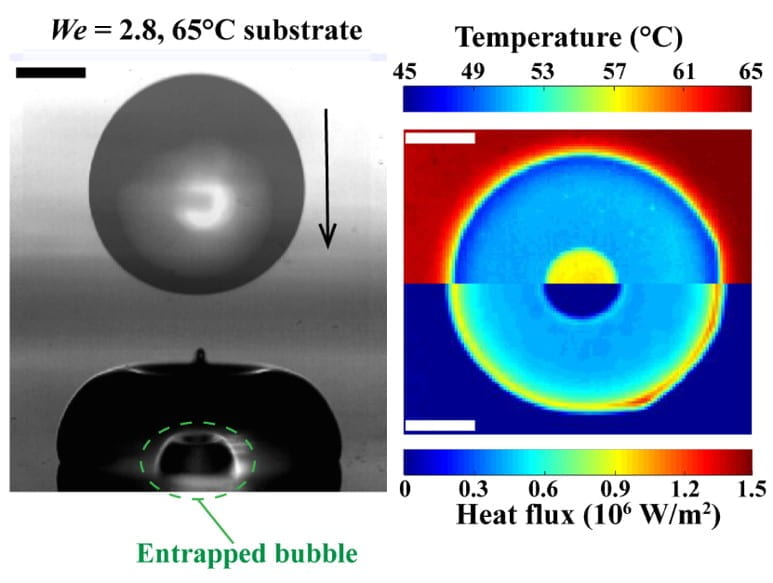Impact bubble entrapment & heat transfer (ETFS)

This study investigates low Weber number droplet impact on heated hydrophobic surfaces. Using synchronized high-speed optical and infrared (IR) imaging, we correlate the droplet dynamics to the spatial distribution of the solid-liquid interfacial temperature, heat flux, and the total heat transfer to the droplet. The total transferred heat of a completely rebounding droplet is also modeled analytically. Denoting the drop diameter and impact velocity as D and v, we find that the total transferred heat Q scales as D1.25v, which is validated using experiments. A unique feature of low-We droplet impact on non-wetting surfaces is the formation of a sub-millimetric entrapped bubble that forms during receding. The substrate temperature in the bubble region is significantly higher than the surrounding area due to the low thermal conductivity of air. Right after the bubble forms, the local heat flux remains stable at the inner contact line (bubble contact line), but decreases at the retracting primary outer contact line. As a result, the local heat flux at the inner contact line becomes increasingly important as the droplet recedes. Nonetheless, the overall heat transfer is reduced by 5.6% and 7.1% at surface temperatures of 50 ℃ and 65 ℃, respectively, as the entrapped bubble reduces the total liquid-solid interface area. The influence of surface roughness on the heat transfer is also quantified. Droplets on the rough surface have a smaller maximum spreading diameter, leading to a smaller heat transfer area and lower heat transfer rate. Moreover, the average heat flux on the rough surface is also lower compared to the smooth surface, indicating a larger interfacial thermal resistance of the rough surface. Overall, the findings highlight the dominance of thermal conduction (as compared to convection or evaporation) as the prominent mode of heat transfer during droplet impact.